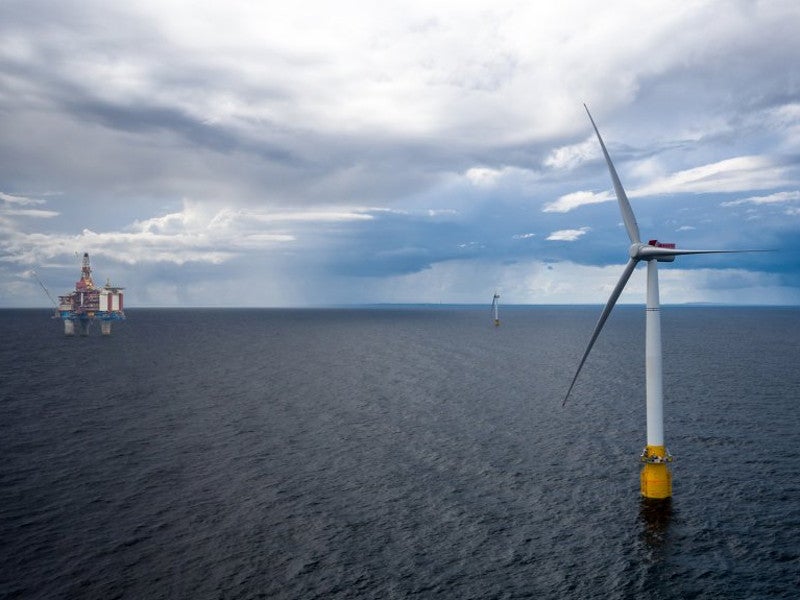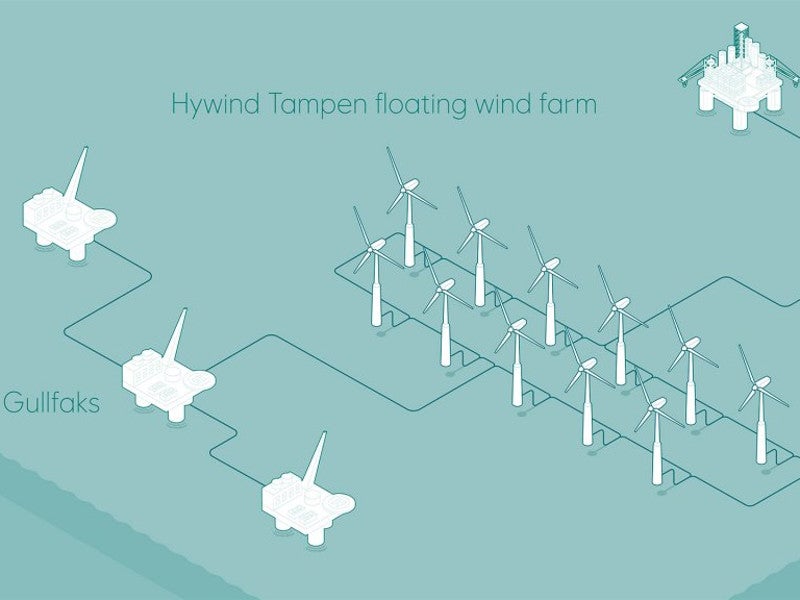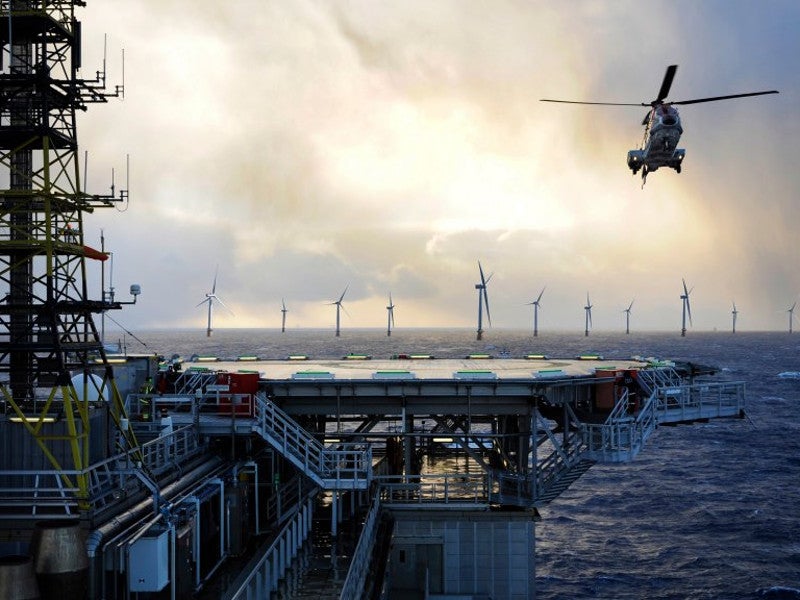Hywind Tampen is an 88MW floating wind power project intended to provide clean electricity for the Snorre and Gullfaks offshore field operations in the Norwegian North Sea. It will be the world’s first floating wind farm to power offshore oil and gas platforms.
The partners of the Snorre and Gullfaks fields reached a final investment decision (FID) in October 2019 and awarded key contracts for the NOK5bn (£445m) project in the same month.
Scheduled to commence operations in the second half of 2022, the Hywind Tampen wind farm will be operated by Equinor, which is also the operator of Snorre and Gullfaks offshore fields.
Hywind Tampen project details
The 88MW floating wind farm development will be based on Equinor’s proprietary Hywind design.
The project is expected to meet approximately 35% of the annual power requirement of five offshore platforms namely Snorre A and B, and Gullfaks A, B and C.
It will help reduce the use of gas-based power for the Snorre and Gullfaks offshore fields, while also off-setting 200,000t of CO₂ emissions and 1,000t of NOx emissions a year.
Location and site details
The Hywind Tampen wind farm will be located approximately 140km off the Norwegian coast. It will be developed in the Tampen area of the Norwegian North Sea, between the Snorre and Gullfaks oil fields.
The water depth at the wind farm site ranges between 260m and 300m.
Wind farm make-up
The Hywind Tampen wind farm will be equipped with 11 Siemens Gamesa SG 8.0-167 DD turbines of 8MW capacity each. The wind turbines will be mounted on floating concrete hulls supplied by Kvaerner.
With a 167m-diameter rotor and 81.5m-long blades, each turbine of the wind farm will have a swept area of 21,900m².
Power transmission
The wind turbines will be connected in a loop by a 2.5km-long, 66kV dynamic inter-array cable system.
The loop will be linked with the Snorre A and Gullfaks A platforms through two separate static export cables of 12.9km and 16km length, respectively.Financing
Enova, a Norwegian government enterprise to promote environment-friendly energy production in the country, will contribute up to NOK2.3bn (£204.6m) for the project.
The Norwegian NOx Fund that supports energy projects for reducing nitrogen oxide emissions has also agreed to provide NOK566m (£50.35m) for the Hywind Tampen wind farm development.
Contractors involved
Equinor finalised contracts worth NOK3.3bn (£277.89m) for the key components of the Hywind Tampen project in October 2019.
Kvaerner was contracted for the design, construction, as well as installation of floating substructures, while Siemens Gamesa Renewable Energy (SGRE) received the turbine supply contract for the project. SGRE was also awarded a five-year maintenance contract for the wind turbines.
JDR Cable System received the cable supply contract for the project, while Subsea 7 will be responsible for the cable installation.
DEME Offshore, a marine engineering firm based in Belgium, was engaged for a front-end engineering and design (FEED) study of the potential floating concrete substructures for the project.
Hywind technology details
Equinor’s Hywind floating wind turbine design involves a single floating cylindrical spar buoy anchored to the sea bed by cables or chains. The floating substructure is ballasted with water and rock or iron ore in order to maintain balance.
Equinor started testing the Hywind design by installing a 2.5MW demonstration unit named Hywind Demo off the coast of Karmoy, Norway, in 2009.
It further commissioned the 30MW Hywind Scotland pilot park in order to demonstrate the feasibility of commercial deployment of the Hywind floating turbine technology in October 2017.
Located at water depths up to 129m, off the coast of Peterhead in Aberdeenshire, Scotland, the Hywind Scotland pilot wind farm consists of five floating wind turbines of 6MW capacity each.
Snorre and Gullfaks oilfields details
The Snorre field was discovered in 1979 and brought on-stream in August 1992.
The Snorre field development partners are operator Equinor (33.3%), Petoro (30%), ExxonMobil (17.5%), Idemitsu Petroleum Norge (9.6%), DEA Norge (8.6%) and Var Energi (1.1%).
In 2018, the Norwegian authorities approved to extend the production life of the Snorre field till 2040.
Discovered in 1978, the Gullfaks field has been in production since December 1986. Equinor is the operator of the field with 51% ownership interest, while the other co-owners are Petoro (30%) and OMV Norge (19%).
The Norwegian authorities have consented to extend the production life of the Gullfaks field up to 2036.





